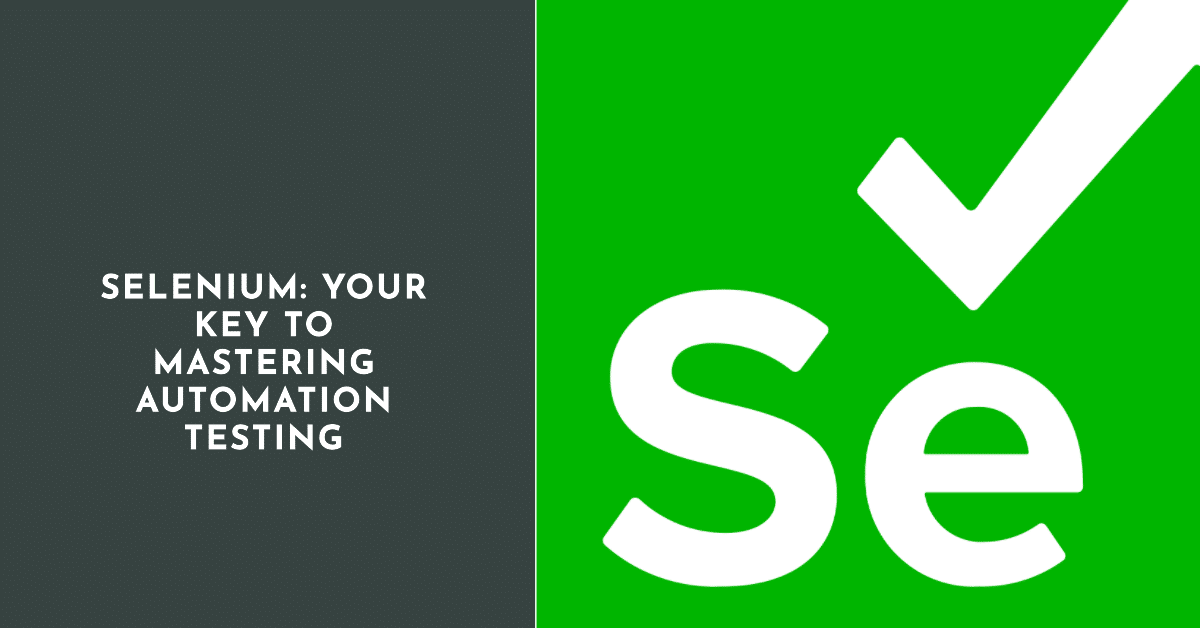
In the fast-paced world of software development, automation testing has become a vital component to maintain software quality and efficiency. Selenium, a powerful and popular tool for automation testing, has proven to be an invaluable asset for developers worldwide. This article serves as a comprehensive guide to understanding Selenium, its features, best practices, and its role in automation testing.
Understanding Selenium
To kick off our exploration into Selenium, we must first grasp its fundamental concept.
Selenium is an open-source, portable framework for testing web applications. It provides a way to control a browser and automate tasks, which is particularly useful for repeating tasks, such as checking how a website or web application responds to various interactions. Selenium supports multiple browsers and programming languages, giving developers flexibility and control over their testing process.
The Components of Selenium
Selenium is not just a single tool but a suite of software, each catering to different testing needs of an organization. It comprises four primary components:
- Selenium IDE (Integrated Development Environment): This is a tool used for prototyping tests, allowing users to record and playback tests to aid in debugging.
- Selenium RC (Remote Control): Though deprecated now, Selenium RC was once the flagship testing framework that allowed more advanced test scripts in multiple programming languages.
- WebDriver: This is the successor to Selenium RC, removing a lot of its limitations and providing a simpler, more concise programming interface.
- Selenium Grid: This tool is used for running tests on different machines against different browsers in parallel.
| Component | Description |
|---|---|
| Selenium IDE | Used for prototyping tests, allowing users to record and playback tests. |
| Selenium RC | Deprecated now, it was once the flagship testing framework allowing more advanced test scripts. |
| WebDriver | The successor to Selenium RC, providing a simpler, more concise programming interface. |
| Selenium Grid | Used for running tests on different machines against different browsers in parallel. |

Advantages of Selenium
Selenium boasts several features that make it stand out as a top choice for automation testing:
- Open Source: As an open-source tool, Selenium is free to use, and it benefits from a robust and active community.
- Multi-Language Support: Selenium supports several programming languages, including Java, Python, C#, Ruby, and JavaScript.
- Cross-Browser Compatibility: Selenium can be used with all major browsers like Chrome, Firefox, Safari, Internet Explorer, and Edge.
- Parallel Test Execution: With Selenium Grid, users can execute multiple tests across different browsers and operating systems simultaneously.
Best Practices for Using Selenium
When using Selenium for automation testing, it’s important to follow some best practices to ensure you get the most out of the tool:
- Designing Robust Test Cases: Effective automation requires careful planning and designing of test cases. Always focus on creating reusable, maintainable tests.
- Implementing Page Object Model (POM): POM is a design pattern in Selenium that creates an object repository for web elements, enhancing test maintenance and reducing code duplication.
- Utilizing Wait Commands: Ensure that your tests are reliable by incorporating wait commands so that your test script doesn’t try to interact with an element before it’s ready.
- Using Correct Locators: Utilizing the right locators like ID, Name, Class Name, etc., can help ensure your tests are precise and reliable.
FAQs About Selenium
What is Selenium primarily used for?
Selenium is primarily used for automating web applications for testing purposes. It provides a way to automate browser actions, which is particularly useful for regression testing.
What languages does Selenium support?
Selenium supports multiple programming languages, including Java, Python, C#, Ruby, and JavaScript.
Can Selenium be used for desktop application testing?
No, Selenium is designed for web application testing. For desktop application testing, tools like Appium, WinAppDriver, or TestComplete can be used.
What is the difference between Selenium RC and WebDriver?
Selenium RC is the predecessor to WebDriver. While RC allows the injection of JavaScript into the browser to automate its actions, WebDriver interacts directly with the browser using the browser’s built-in automation support.
Why is the Page Object Model important in Selenium?
The Page Object Model is a design pattern that helps create an object repository for web elements. It makes test cases more readable and maintainable, reduces code duplication, and improves the robustness of test scripts.
External link:
- Selenium Official Website: This is the official website of Selenium and offers comprehensive documentation, downloads, and other resources.
- Selenium Tutorials on Guru99: A complete tutorial series on Selenium, covering its different components and uses.
- Mozilla Developer Network: Mozilla provides a guide to setting up your own automation testing environment using Selenium.
- Selenium Courses on Udemy: Udemy offers several paid courses on Selenium, catering to different levels of experience.
- StackOverflow: The Selenium tag on StackOverflow has many discussions and questions related to Selenium, which can be useful for problem-solving or learning new things.






Comments (0)
There are no comments here yet, you can be the first!